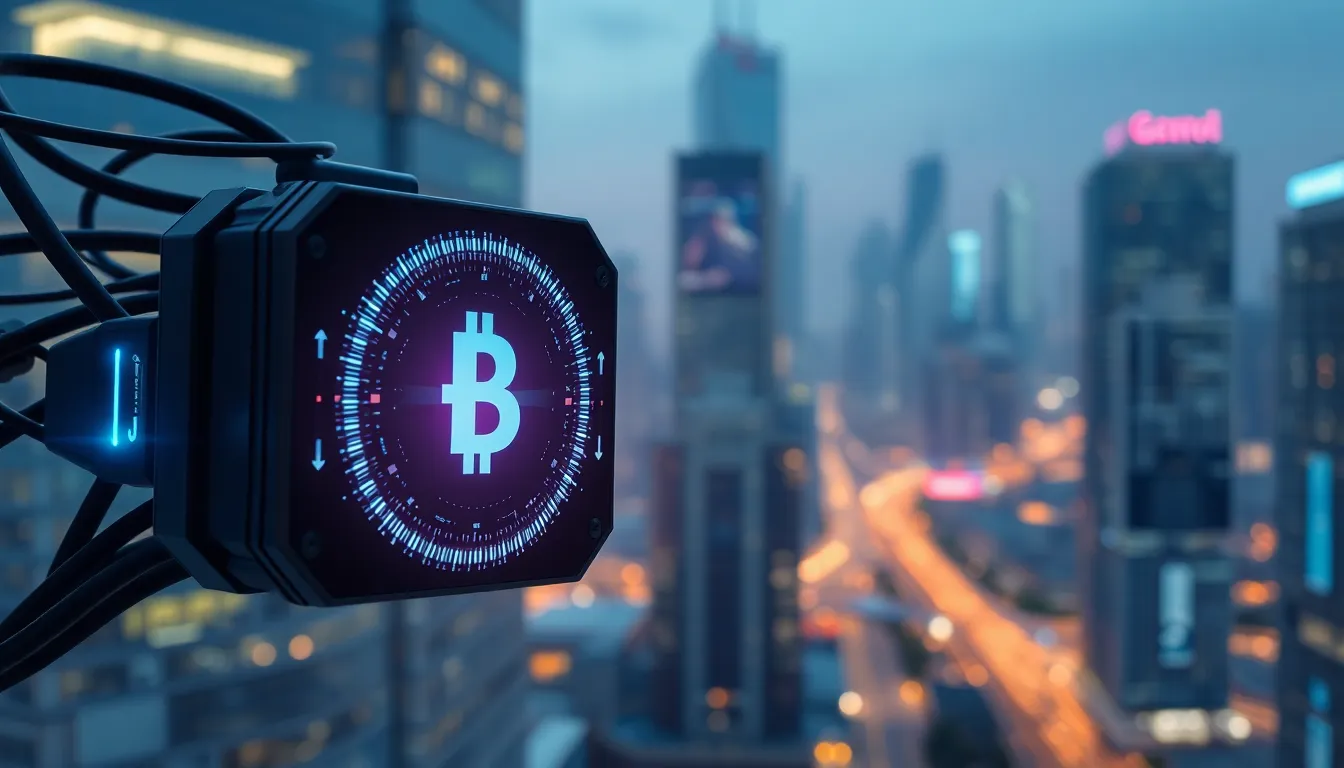Table of Contents
ToggleImagine a world where your fridge orders groceries while your car finds the fastest route to the nearest gas station—all without you lifting a finger. Sounds like a sci-fi movie, right? Welcome to the fascinating intersection of Blockchain and the Internet of Things (IoT), where technology isn’t just smart; it’s downright genius.
Overview of Blockchain and IoT
Blockchain and IoT can transform multiple industries by enhancing connectivity and security. Blockchain provides a decentralized framework, ensuring data integrity across various IoT devices. Data from smart appliances, vehicles, and wearables becomes more secure due to immutability and transparency offered by blockchain technology.
IoT devices produce massive amounts of data continuously. This data can improve operational efficiency, predict maintenance needs, and optimize resource management. When combined with blockchain, the data sharing process becomes more efficient and reliable, as it eliminates single points of failure.
Smart contracts, facilitated by blockchain, automate processes among devices and applications. For example, a smart fridge can order groceries automatically when supplies run low, while using blockchain to securely execute transactions. Devices communicate seamlessly, contributing to a more interconnected environment.
Various industries, such as healthcare, supply chain, and manufacturing, can benefit from this integration. IoT devices in healthcare track patient data securely on the blockchain, ensuring data authenticity while maintaining privacy. In supply chains, blockchain enhances traceability, allowing stakeholders to verify product origins and reduce fraud.
Adopting this technology combination leads to numerous benefits. Enhanced security prevents unauthorized access to sensitive data, while improved efficiency reduces operational costs. Organizations leverage these advancements to remain competitive, creating better experiences for consumers through smart, connected solutions.
Benefits of Integrating Blockchain and IoT

Integrating Blockchain with IoT yields significant advantages, particularly in security and data integrity. The combination improves functionalities across various sectors.
Improved Security
Improved security emerges as a key benefit of this integration. Blockchain creates a decentralized environment where data breaches face substantial barriers. Each transaction is encrypted, adding layers of protection against unauthorized access. IoT devices sharing sensitive information become less vulnerable, as the data is tamper-proof and traceable. Organizations can monitor and manage devices more effectively, reducing risks related to data manipulation. More secure systems foster trust among users, encouraging wider adoption of connected technologies. As a result, this collaboration not only secures individual devices but also fortifies entire networks.
Enhanced Data Integrity
Enhanced data integrity represents another hallmark of integrating Blockchain with IoT. Blockchain’s immutable ledger guarantees that data recorded cannot be altered retroactively. IoT devices transmit real-time information, which retains its accuracy due to this unchangeable framework. Accurate data ensures reliable decision-making for various applications, from supply chain management to healthcare monitoring. This integrity allows businesses to track products more efficiently, providing transparent histories that minimize disputes. Accuracy in data collection significantly drives business performance, optimizing processes and reducing operational costs. Leveraging blockchain technology assures stakeholders of trustworthy information, thereby elevating overall operational standards.
Challenges in Blockchain and IoT Integration
Integrating Blockchain with IoT brings several challenges that must be addressed for successful implementation. Scalability and data privacy are two critical areas that require attention.
Scalability Issues
Scalability poses significant challenges in the integration of Blockchain and IoT. Blockchain networks often face limitations in transaction throughput, with some networks handling only a few transactions per second. As the number of IoT devices increases, transaction demands can overwhelm existing infrastructures. High-frequency data generation from devices places additional strain on network capacity, leading to processing delays. Solutions such as off-chain scaling techniques or layer two protocols may alleviate these issues. Both approaches can help optimize performance, but trade-offs between security and efficiency must be carefully considered.
Data Privacy Concerns
Data privacy remains a pressing concern when integrating IoT with Blockchain. While Blockchain promotes transparency, this characteristic can conflict with privacy requirements. Personal data from IoT devices may become exposed on a public ledger, raising compliance risks with regulations such as GDPR. Techniques like data anonymization and permissioned blockchains can mitigate these risks. These methods allow for secure data sharing while preserving user privacy. Ensuring strong encryption protocols further protects sensitive information from unauthorized access, fostering greater trust among users in connected ecosystems.
Real-World Applications of Blockchain and IoT
The integration of Blockchain and IoT delivers innovative solutions across various sectors. Two significant applications are supply chain management and the development of smart cities.
Supply Chain Management
Blockchain technology enhances transparency and traceability in supply chains. Businesses can track the origin of products using IoT sensors, ensuring authenticity from manufacturer to consumer. Real-time tracking reduces fraud and discrepancies, while blockchain secures transaction data. An immutable ledger provides a reliable record of every transaction, enabling auditors and stakeholders to verify information easily. Companies employing this combination experience improved operational efficiency and faster dispute resolution. The combination empowers organizations to build trust with consumers by ensuring product integrity.
Smart Cities
Smart cities benefit tremendously from the synergy between Blockchain and IoT. Public services, such as waste management and traffic control, use connected devices to gather data. This real-time information helps city planners optimize resource allocation and improve service delivery. Blockchain secures the data generated by these devices, ensuring privacy and preventing unauthorized access. By employing smart contracts, cities can automate processes such as utility billing and traffic management. Enhanced connectivity boosts residents’ quality of life while reducing operational costs. Together, these technologies pave the way for sustainable urban development.
Future Trends in Blockchain and IoT
The integration of Blockchain with IoT is set to reshape numerous industries. Enhanced automation stands out as a key trend, with devices performing tasks independently. Smart contracts streamline processes among connected devices, allowing for real-time execution of agreements without human intervention.
In healthcare, predictive analytics will rely heavily on Blockchain and IoT synergy. Secure patient data tracking improves treatment timelines and ensures compliance with regulations. Providers can access accurate health records seamlessly, resulting in better patient outcomes.
In the realm of supply chain management, transparency and traceability gain importance. Consumers demand proof of product authenticity, and Blockchain provides that assurance. Tracking products from origin to consumer ensures no discrepancies in delivery or quality.
Smart cities are expected to flourish with the combination of these technologies. Infrastructure will utilize data from connected devices to enhance public services. Traffic management systems optimize flow based on real-time data, ultimately reducing congestion.
Data privacy will remain a critical focus as these technologies evolve. Companies are exploring permissioned blockchains to control who accesses information. Enhancements in encryption techniques safeguard personal data, addressing lingering privacy concerns.
Scalability will continue to pose challenges as the number of IoT devices grows. Layer two protocols and off-chain solutions can help facilitate more transactions efficiently. These approaches focus on balancing security and performance, allowing systems to handle increased loads.
Industry partnerships will emerge as crucial drivers of innovation in Blockchain and IoT. Collaborations between tech firms and regulators can lead to more robust standards. Together, they can navigate the complexities of technological integration, ensuring a secure future.
The fusion of Blockchain and IoT represents a transformative shift in how industries operate. By enhancing security and data integrity, this integration empowers organizations to optimize processes and foster trust among users. As the landscape evolves, real-world applications in sectors like healthcare and supply chain management will continue to emerge, driving innovation and efficiency.
Though challenges like scalability and data privacy remain, ongoing advancements and strategic partnerships will pave the way for more secure and effective solutions. The future holds exciting possibilities for smart cities and connected devices, making everyday life more convenient and efficient. Embracing this technology combination will be crucial for businesses striving to stay ahead in an increasingly digital world.











